As you think about what makes a place truly peaceful, have you ever wondered what makes Japanese gardens so special? It’s because they have a perfect balance of elements that work together to create a sense of calm. This balance is what sets them apart from other types of gardens.
Japanese gardens are designed to help people relax and feel connected to nature. They often feature beautiful plants, tranquil water features, and carefully placed stones that all work together to create a sense of harmony. By understanding the secrets of Japanese garden design, you can create your own peaceful oasis at home.
Serene Water Feature Ideas

Serene water features, such as koi ponds and tranquil fountains, create a soothing ambiance in a Japanese garden. Ripples on the water’s surface reflect surrounding foliage, adding depth and visual interest. A gentle stream or small waterfall can also be incorporated, producing a calming melody that enhances the overall peaceful atmosphere of the garden.
Lanterns and Lighting Designs

Lanterns and lighting designs add ambiance to Japanese gardens. Traditional stone or metal lanterns, called tōrō, are often placed near water features or along pathways, casting a warm glow. Soft, subtle lighting highlights garden elements, creating a serene atmosphere, especially during evening strolls. Solar-powered lanterns are also used for eco-friendly illumination.
Moss and Ground Cover Options
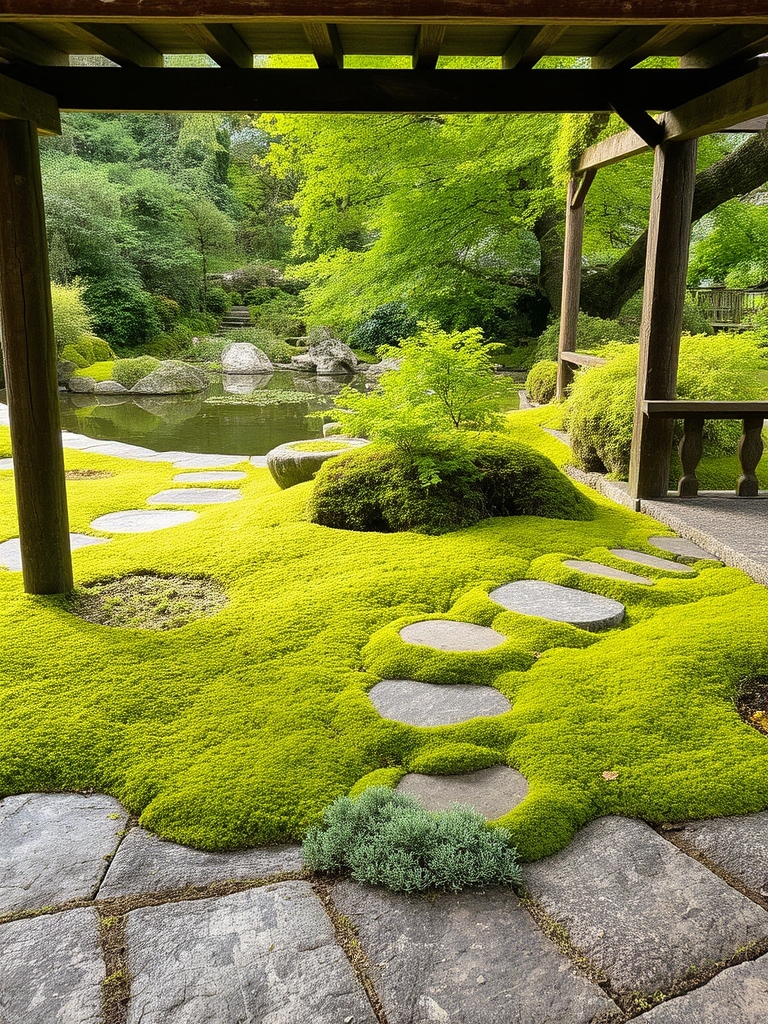
Moss and ground cover options add a lush, serene layer to Japanese gardens. Moss thrives in shady areas, while low-growing ground covers like thyme, creeping juniper, and sedum fill spaces between pavers and stones, softening the hardscape and creating a sense of natural harmony. These options require minimal maintenance and promote a tranquil atmosphere.
Small Space Garden Solutions
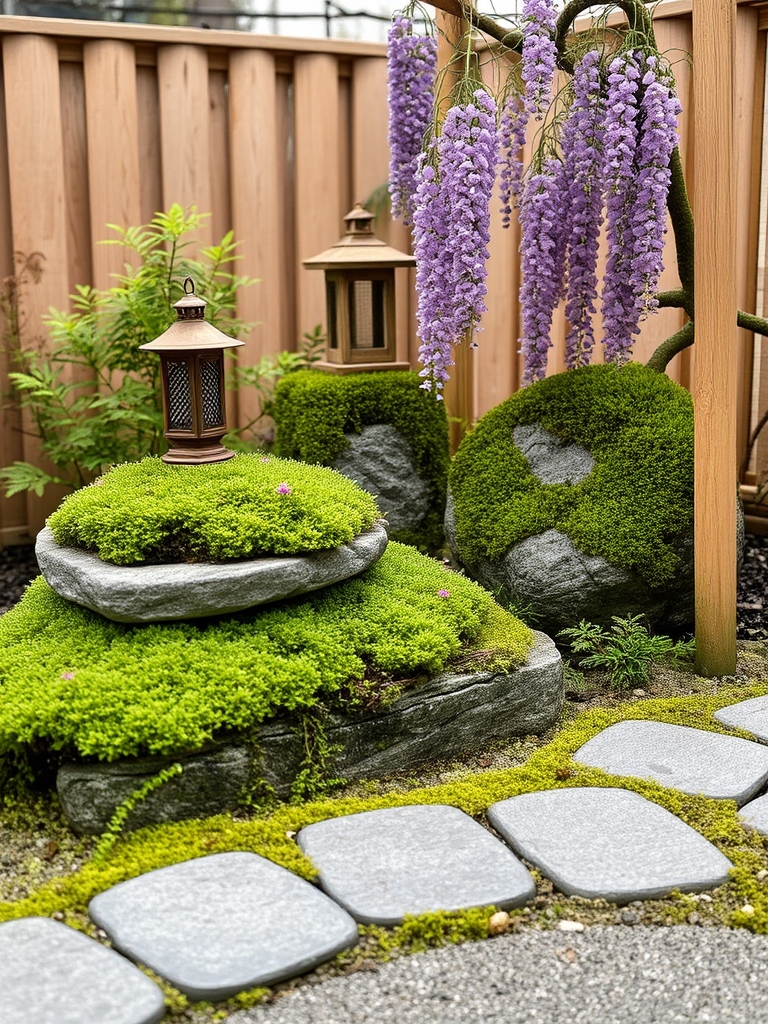
Small space garden solutions involve utilizing vertical elements, such as trellises and tiered planters, to maximize space in tiny Japanese gardens. Carefully selected compact plant varieties and thoughtful placement of design elements, like stepping stones and lanterns, also help create a serene atmosphere in limited areas.
Traditional Japanese Plant Choices

Traditional Japanese Plant Choices often feature native species like maple, cherry blossom, and bamboo, which symbolize the changing seasons and natural beauty. Moss, grasses, and groundcovers are also used to create a serene atmosphere, while bonsai trees and carefully pruned topiaries add a touch of elegance to the garden.
Stone and Gravel Pathways
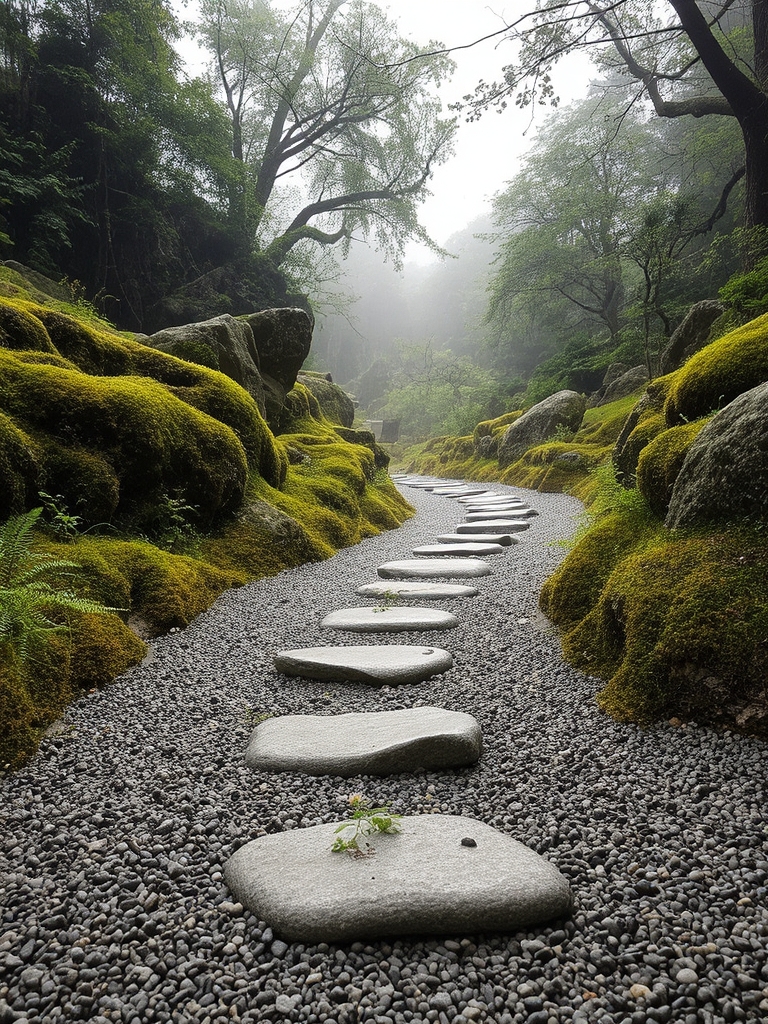
Stone and gravel pathways are essential elements in Japanese gardens, symbolizing the journey through life. They are often meandering and irregular, inviting contemplation and mindfulness. The soft crunch of gravel beneath footsteps adds a tactile experience, while carefully placed stones guide visitors through the serene landscape, creating a sense of harmony and balance.
Teahouse and Seating Areas

A teahouse is a serene focal point, often accompanied by natural stone seating areas and meandering paths. Incorporating traditional Japanese architectural elements, these structures invite tranquility and mindfulness. Nearby benches or stepping stones provide additional seating, encouraging visitors to pause and appreciate the garden’s beauty. Soft lighting enhances the ambiance in the evening.
Natural Element Combinations
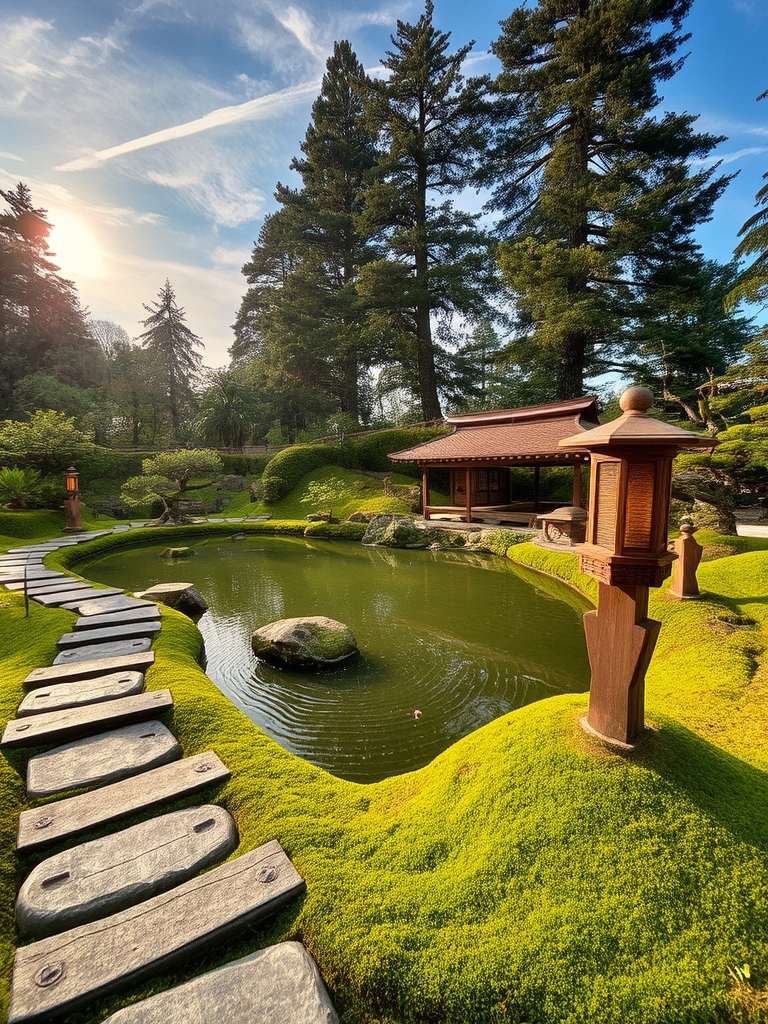
Natural Element Combinations in Japanese gardens blend water, stone, and plants to create harmony. Water features, such as koi ponds, complement stone pathways and lanterns, while plants like bonsai trees and moss add texture and color, balancing the space and evoking a sense of serenity and connection to nature.
Minimalist Garden Designs

Minimalist garden designs emphasize simplicity and natural beauty, often featuring clean lines, limited colors, and carefully selected plants like bonsai trees or moss. This aesthetic creates a serene and meditative atmosphere, perfect for contemplation and relaxation, while also celebrating the elegance of Japanese minimalism.
Courtyard and Balcony Transformations

Transform small courtyards and balconies into peaceful Japanese oases. Incorporate natural elements like stone, wood, and plants to create a serene ambiance. Add a water feature, lanterns, and carefully placed decor to enhance the zen atmosphere, perfect for meditation or relaxation in a compact urban space.
Japanese Inspired Ornamental Features
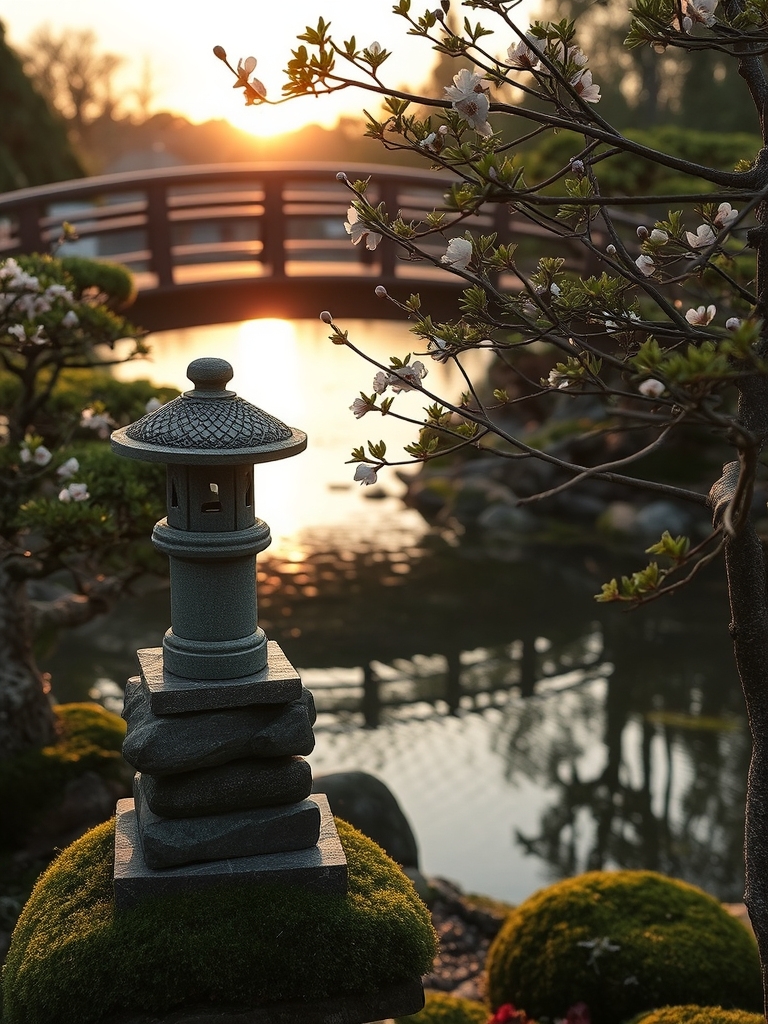
Japanese Inspired Ornamental Features include stone lanterns, bonsai trees, and decorative bridges, which add a touch of serenity to the garden. These features are often carefully placed to create a sense of balance and harmony, reflecting the principles of Japanese design. They can also serve as focal points, drawing the eye to specific areas of the garden.
Calming Color Schemes and Textures
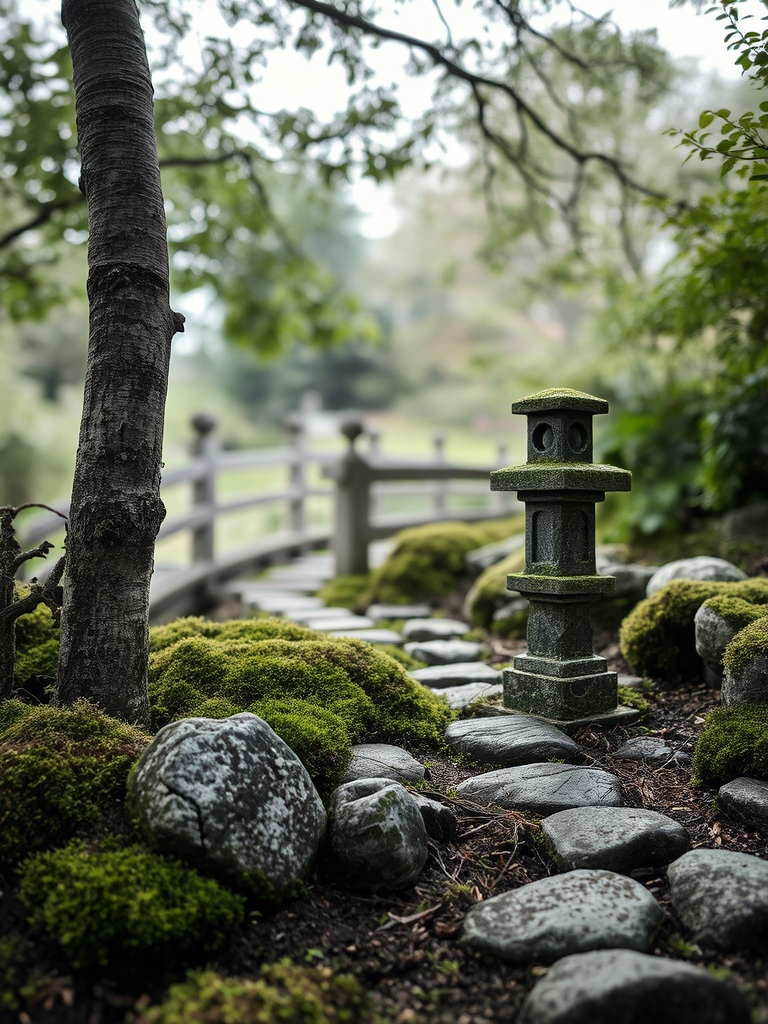
Calming color schemes and textures are essential in Japanese gardens, featuring muted tones like green, brown, and gray. Natural materials such as wood, stone, and moss create a soothing atmosphere, while varying textures add depth and visual interest to the space, promoting serenity and tranquility.
Waterfall and Pond Designs
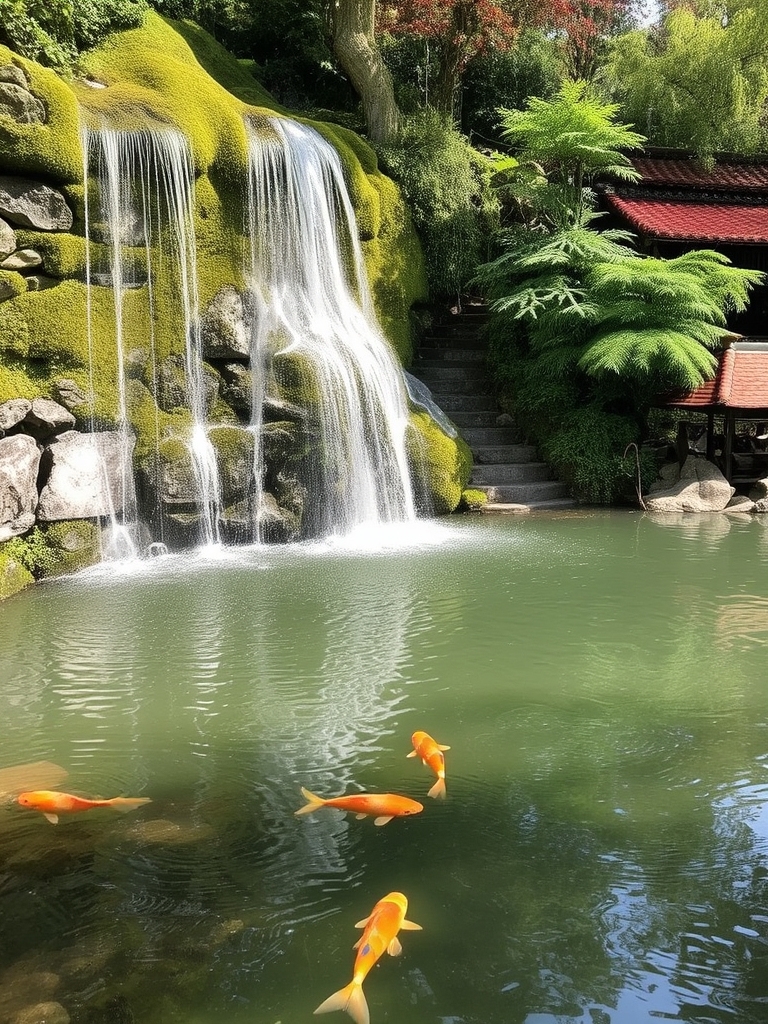
Serenity-creating waterfall and pond designs are staples in Japanese gardens. Gentle cascades and quiet pools reflect the surrounding beauty, inviting contemplation. Carefully placed stones and lush greenery enhance the natural ambiance, while koi fish swim peacefully beneath the surface, creating a sense of harmony and tranquility in the garden.
Meditation and Reflection Spaces
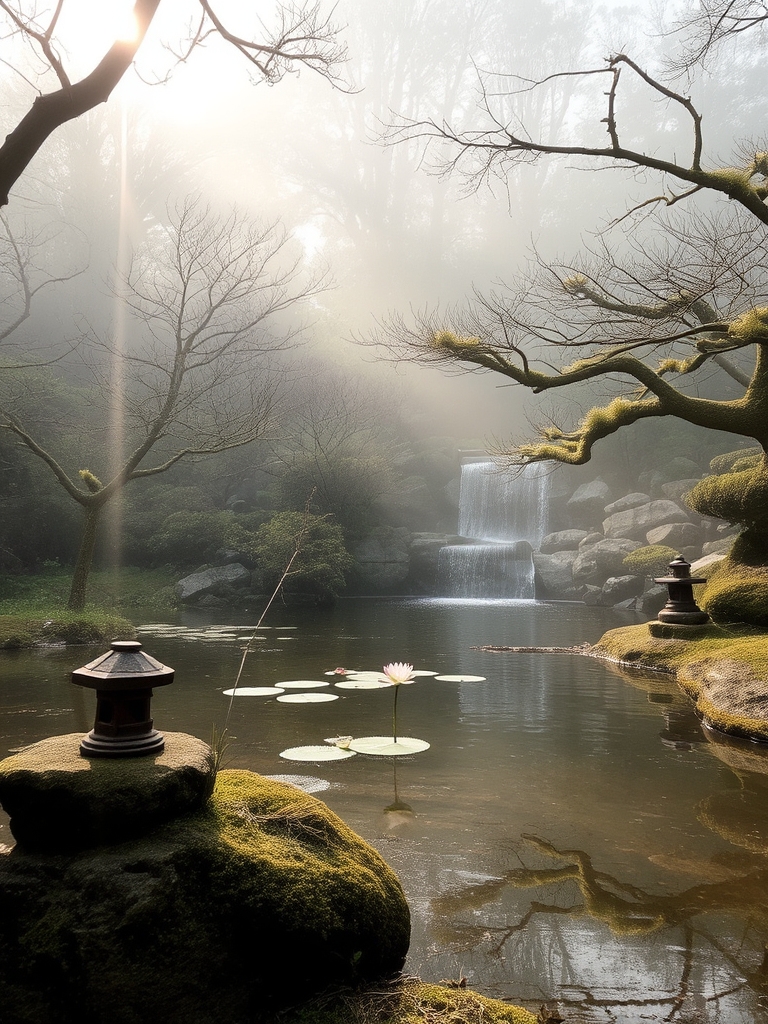
Meditation and reflection spaces in Japanese gardens foster mindfulness and tranquility. Serene water features, carefully pruned trees, and natural stone arrangements create a peaceful atmosphere, inviting contemplation and inner reflection. These spaces often feature benches or seating areas, encouraging visitors to pause and connect with nature.
Conclusion
You’ll create a serene atmosphere by incorporating elements like a small koi pond, as seen in Kyoto’s Zen gardens, which showcases a tranquil water feature idea. This design promotes calmness and connection to nature, exemplified by the pond’s soothing sounds and visually appealing ripples, thereby enhancing your Zen space’s overall aesthetic and ambiance.

